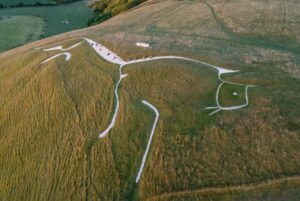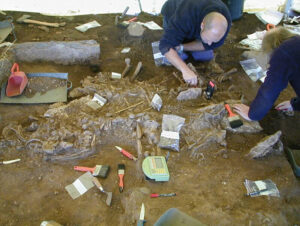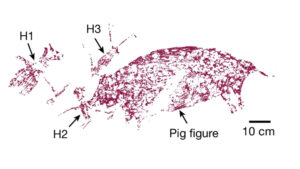We’ve long known that the Vikings lived in North America about a millennium ago. But now, a remarkable new technique has given us the exact year.
A 2021 study in the scientific journal Nature showed that Vikings lived at L’Anse aux Meadows, in what’s now Newfoundland, in exactly 1021 A.D. Wooden artifacts bearing scars from iron implements reveal that the inhabitants felled trees at the site, on Newfoundland’s extreme northern tip. And the evidence verifies that these seafarers made the earliest known Atlantic crossing from Europe to the Americas.
Tree rings and a shower of cosmic radiation
How did the research team date the evidence so accurately? The answer came from the stars. In 993 AD, a “once-in-a-millennium” cosmic ray event showered Earth in radiation. Tree rings captured telltale signs of the high-energy particles’ impact.
The team simply located the special ring in tree stumps at L’Anse aux Meadows, then counted outward to the edge of the tree. In every case, they found 28 rings between the 993 ring and the tree bark — apparently, 1021 AD was a busy woodcutting year for the Norse.
Predominantly, Newfoundland Vikings cut fir and juniper. The prolific need for timber checks out with their lifestyle in the area. They used it for almost every aspect of life, from heating and cooking to framing sod houses and building longships. As such, wood chips also litter L’Anse aux Meadows. Because metal tools clearly made the cuts, researchers have ruled out the possibility that indigenous populations made them, which first helped prove the presence of Norse people.
Documentation from around the world supports the 993 event equally thoroughly. Dendrochronological archives from Germany, Ireland, Arizona, and Japan all render evidence that a massive amount of radiation hit Earth that year. Likely a significant solar storm, the event caused atmospheric carbon levels to spike. In turn, the change altered tree growth worldwide.
Exceptional dating accuracy
With modern dating methods, the L’Anse aux Meadows team even discovered in which season the site’s inhabitants felled each tree. To do it, they examined individual cells on the ancient trees’ surfaces.
According to the study’s authors, the accuracy of the findings amounts to a watershed in the area’s anthropological history. Previously, precise information was outright unavailable. Most earlier estimates had come from architectural remains and a handful of artifacts. Interpretations of the Icelandic sagas and oral histories from centuries later also rendered information. But existing radiocarbon dating at the site registered as scattershot evidence across the entire Viking Age: 793–1066 A.D.
Researchers think dating based on the 993 event will likely gain popularity. If the L’Anse aux Meadows findings are any indication, the method could help archaeologists nail down unprecedentedly accurate timelines of Medieval events.






